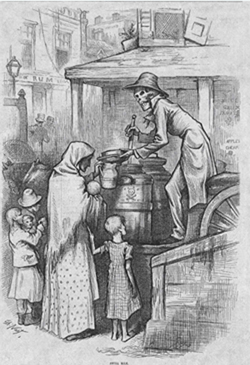Breakfast
Cereal with Almond Milk and Banana
Lunch
Spinach Soup no. 2
Toast
Dinner
Nut Roast
Roasted Squash
Apple Bread
Baked Banana
To begin the day, we took it easy with a choice of two cereals: Kellogg’s Corn Flakes (invented 1906), and Post Grape-Nuts (developed 1897). My boyfriend has decided to join me on this adventure, as long as I started the coffee pot every morning.
After breakfast, I cracked the pages of the No Animal Food, from 1910.
NAF, which is available in its entirety on Project Gutenberg here, begins with a manifesto. The author presents the reasoning behind vegetarianism: “Briefly, the pleas usually advanced on behalf of the vegetable regimen are as follows: It is claimed to be healthier than the customary flesh diet; it is claimed for various reasons to be more pleasant; it is claimed to be more economical; it is claimed to be less trouble; it is claimed tobe more humane.” He goes on to say that above all, this book is written for the purposes of health, pointing at the proliferation of patent medicines and the high rate of tuberculosis as a sign that we on the whole are malnourished. The following chapters offer Science to support vegetarianism, as well as a list of notable vegetarians (Tesla!), and then a brief essay to support his other “pleas.” Some of the writing is quite modern in sentiment.

A 19th century milk man distributing "Swill Milk."
Then he begins a chapter on why a non-dairy diet should be accepted. I was shocked by the contents of this chapter, as it provides an extremely insightful look into the origins of veganism, which were rooted in a very real health concern of the 19th and early 20th centuries. Read on:
“It seems to be quite generally acknowledged by the medical profession that raw milk is a dangerous food on account of the fact that it is liable from various causes, sometimes inevitable, to contain impurities. Dr. Kellogg writes: ‘Typhoid fever, cholera infantum, tuberculosis and tubercular consumption—three of the most deadly diseases known; it is very probable also, that diphtheria, scarlet fever and several other maladies are communicated through the medium of milk….’
The germs of tuberculosis seem to be the most dangerous in milk, for they thrive and retain their vitality for many weeks, even in butter and cheese. An eminent German authority, Hirschberger, is said to have found 10 per cent of the cows in the vicinity of large cities to be affected by tuberculosis…Excreta, clinging to the hairs of the udder, are frequently rubbed off into the pail by the action of the hand whilst milking. Under the most careful sanitary precautions it is impossible to obtain milk free from manure, from the ordinary germs of putrefaction to the most deadly microbes known to science. There is little doubt but that milk is one of the uncleanest and impurest of all foods.”
The impurity of milk, particularly in cities, was an absolutely unavoidable truth at this time. Pasteurization was not required by law until 1912, and large cities like New York had ongoing problems with “Swill Milk“: milk infected by disease, milk from diseased cows, spoiled milk, watered down milk, doctored milk; you name it. Unpasteurized milk was responsible for an infant mortality rate as high as 25% on the Lower East Side of Manhattan.
The author goes on to give a few other reasons for a dairy-free diet, but this is the most powerful.
So how did my first day of vegan eating go? Recipes in the next post.
